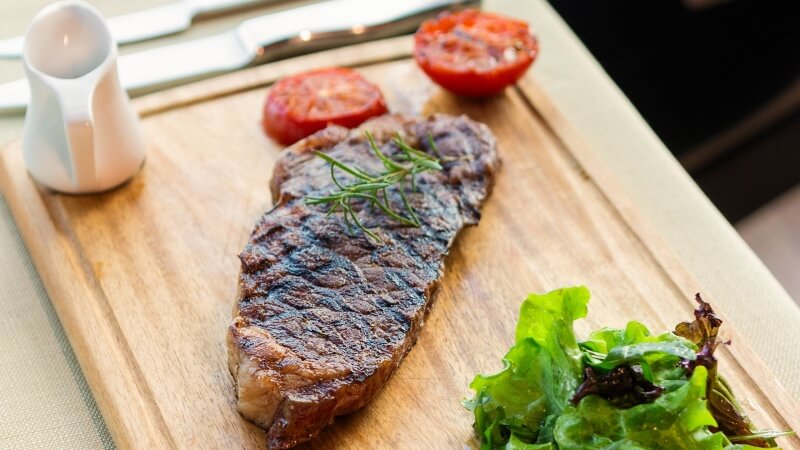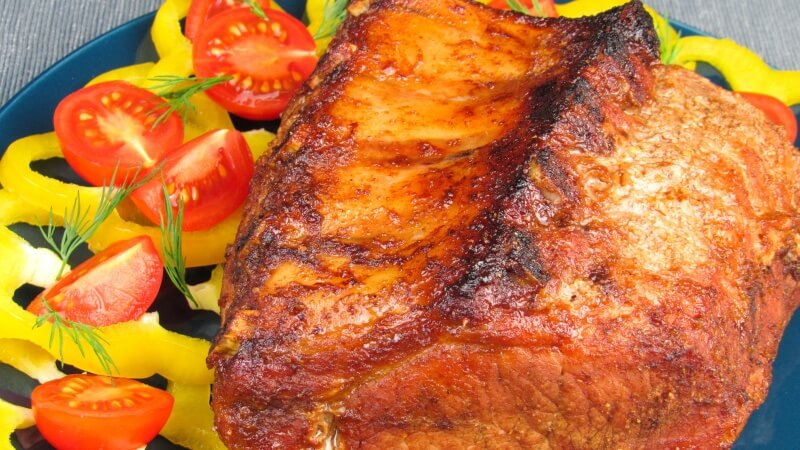
How To Enhance Your DIY Meat Probe with Voice Control Features
Every culinary enthusiast knows the importance of a perfectly cooked steak, and that’s where a meat probe comes in handy. But what if we could

In the world of precision cooking, a meater probe stands out as a vital tool for gauging the perfect cook.
However, crafting one yourself involves more than just assembling components; it requires careful consideration of circuit protection.
In this blog, we’ll dive into essential measures to safeguard your DIY meater probe, ensuring it functions flawlessly and safely every time you cook.
Understanding the basic circuitry of a meater probe is the first step in ensuring its longevity and effectiveness.
The electronic heart of a meater probe consists of a temperature sensor, a microcontroller, and a wireless communication module. The sensor, typically a thermistor or thermocouple, is responsible for temperature measurement. The microcontroller processes this temperature data and coordinates the communication.
The choice of a wireless module, whether it’s Bluetooth or Wi-Fi, depends on the desired range and compatibility with external devices.

It’s crucial to select components that can handle the specific temperature ranges and environmental conditions of cooking, as well as efficiently communicate data.
Each component in a meater probe’s circuit plays a specific role and requires protection. The temperature sensor must be capable of accurate readings in a high-temperature environment, necessitating thermal stability and potentially heat shielding.
The microcontroller, while not directly exposed to heat, needs protection from voltage fluctuations and short circuits.
Wireless modules, critical for remote monitoring, require stable power and shielding from interference to maintain a reliable connection. Understanding these roles aids in designing a circuit that is both functional and resilient.
Effective power management is essential in preventing damage to the delicate electronics within a meater probe.
Selecting an appropriate power source for your meater probe is a balancing act between portability and reliability. Batteries, while portable, must be chosen with consideration for their voltage output and capacity to ensure they can sustain the probe’s operation for the desired duration.
Over-voltage can damage the electronics, while under-voltage might lead to inadequate performance or data transmission failures. Direct power sources, although more reliable in terms of steady voltage, must include safeguards like fuses or circuit breakers to protect against power surges and electrical faults.
Incorporating comprehensive power protection measures is crucial. Over-voltage protection can be achieved through Zener diodes, which divert excess voltage away from sensitive components.
Under-voltage protection might involve using a voltage supervisor IC that triggers a shutdown or alert when power levels drop too low, preventing erratic probe behavior.
Additionally, including a power-on reset circuit ensures that the microcontroller starts up correctly every time, avoiding glitches that could lead to inaccurate readings or wireless connectivity issues.
The temperature sensor is the most crucial part of a meater probe, directly exposed to cooking temperatures and requiring specific protection measures.
When choosing a sensor for your meater probe, opt for ones specifically designed for high-temperature applications. Thermocouples are often favored in professional cooking environments due to their wide temperature range and durability.
For additional protection, consider encapsulating the sensor in a material that can withstand high temperatures, like ceramic or high-grade stainless steel. This not only protects the sensor from direct heat but also from potential physical damage, such as being dropped or knocked
against hard surfaces. Ensure that any protective casing allows for accurate temperature readings without significant delay or alteration.
Apart from choosing a heat-resistant sensor, implementing physical protection measures is vital. This includes using thermal insulation materials to shield the sensor and the rest of the circuitry from extreme temperatures.
Silicone or other heat-resistant polymers are excellent choices for encasing the probe, as they provide both insulation and waterproofing.
Additionally, consider the probe’s design in terms of ergonomics and safety – They should be easy to handle without risk of burns or slipping, and the casing should be robust enough to withstand regular kitchen use.
Incorporating specific components can provide an additional layer of safety to your meater probe’s electronic circuit.
Inclusion of fuses in your meater probe’s design is a simple yet effective way to prevent overcurrent damage. Fuses will physically break the circuit in case of excessive current, thereby protecting other components.
Transient Voltage Suppressors (TVS) are also critical for safeguarding against sudden voltage spikes, which can occur during power surges or due to electrostatic discharges. TVS diodes are designed to absorb excess energy quickly and efficiently, ensuring the sensitive parts of the circuit remain unharmed.
Voltage regulators play a vital role in delivering a steady voltage to the microcontroller and sensor, which is crucial for accurate performance. By using a regulator, you ensure that fluctuations in the power source do not impact the readings or functioning of the probe.
Filter capacitors are equally important; they smooth out any ripples in the power supply, providing a clean and stable voltage. This stability is particularly important for the wireless module, as power fluctuations can disrupt wireless signals.
Minimizing electromagnetic interference (EMI) is crucial for the reliable performance of a meater probe.
To design a meater probe that is resistant to electromagnetic interference, consider the layout and shielding of your circuit. Utilizing twisted pair wiring for the sensor connections can help minimize EMI. Incorporating ferrite beads on cables can suppress high-frequency noise.
The use of shielded cables, especially for connections to the wireless module, can prevent external EMI from affecting signal transmission. Additionally, grounding techniques should be employed to provide a path for any interference to be safely discharged.
Effective shielding is essential in protecting the meater probe’s circuit from external electromagnetic fields. This can be achieved by enclosing sensitive components, particularly the wireless module, in conductive enclosures. These enclosures act as Faraday cages, preventing EMI from penetrating and disrupting the electronic components.
Grounding is another critical aspect; it ensures that any electrical noise is diverted away from the sensitive parts of the circuit. Ensure that the probe’s casing, if conductive, is properly grounded, or creates a dedicated grounding path for non-conductive casings.
The design and layout of the circuit board play a pivotal role in the overall durability and functionality of your meater probe.
Designing your meater probe’s circuit board requires careful consideration of heat resistance and durability. Select materials for the PCB that can endure the temperature extremes it will face. FR4 is a common choice due to its thermal stability and electrical insulation properties. In your layout, strategically place components to minimize heat buildup.

Components sensitive to heat should be placed away from heat-generating parts like the microcontroller. If your design includes a battery, ensure it’s shielded from heat sources. Using thermal vias can be an effective way to dissipate heat across the board.
A well-planned PCB layout is crucial for preventing short circuits and overheating. Ensure adequate spacing between components and tracks to prevent accidental shorts. This is especially important for high-current paths. Utilize thermal relief pads on solder joints to reduce the risk of overheating and potential board damage during soldering.
Consider the placement of larger components and connectors, ensuring they don’t obstruct air flow or create points of heat concentration. Adequate spacing not only prevents overheating but also facilitates easier repairs and modifications if needed.
Testing your meater probe is a critical final step to ensure all protection measures are effective and the probe functions as intended.
Conduct thorough testing of your meater probe to ensure all safety and functionality aspects are met. This includes load testing the circuit under various operating conditions to observe how it handles heat and power consumption.
Test the response of fuses and TVS diodes under simulated overcurrent and overvoltage conditions.
Confirm that the wireless module maintains a stable connection, and there’s no interference affecting its operation. Testing should mimic real-world cooking scenarios as closely as possible to ensure reliability when it matters most.
After ensuring the circuit’s safety and functionality, focus on the accuracy and consistency of the temperature readings.
Compare the meater probe’s readings against a known accurate thermometer across various temperatures, from low to high. Adjustments may be required in the software or hardware for precise calibration.
Repeat tests at different points in time to verify the consistency of readings. This step ensures that when you use the probe in cooking, you can trust its accuracy and make informed decisions about your food’s doneness.

Creating your own meater probe with robust circuit protection is not just a satisfying DIY project but also a valuable addition to your cooking toolkit. By following these detailed guidelines, you ensure the safety, reliability, and accuracy of your homemade probe.
Your efforts in circuit design, assembly, and testing culminate in a tool that enhances your cooking precision and safety. So, embark on this rewarding journey and cook with confidence, knowing your DIY meat probe is up to the culinary challenge.


Every culinary enthusiast knows the importance of a perfectly cooked steak, and that’s where a meat probe comes in handy. But what if we could

When it comes to cooking perfection, a meat probe is an indispensable tool for any chef or home cook. But in the world of meat

The moment you bring a meat probe into your kitchen, it’s not just about cooking anymore; it’s about precision, about transforming an ordinary meal into

Ever questioned if a meat probe could be your secret weapon for the perfect roast chicken? It’s a culinary showdown: the precision of a meat

Every culinary enthusiast knows the importance of a perfectly cooked steak, and that’s where a meat probe comes in handy. But what if we could

When it comes to cooking perfection, a meat probe is an indispensable tool for any chef or home cook. But in the world of meat

The moment you bring a meat probe into your kitchen, it’s not just about cooking anymore; it’s about precision, about transforming an ordinary meal into

Ever questioned if a meat probe could be your secret weapon for the perfect roast chicken? It’s a culinary showdown: the precision of a meat
Copyright © 2024 meaterprobe. All Rights Reserved.